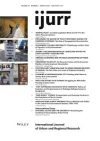Both notions elaborated in this article, exclusion and the border, are cultural constructs which can take on different meanings in different milieux. In order to understand socio‐cultural exclusion in the context of EU integration and new centralities created by globalization, the project presented here addressed social, cultural and spatial exclusion in peripheral EU border cities and islands. This article focuses on how borderland residents experience socio‐cultural exclusion of ‘others’ and of themselves, and forge their spatialities and mappings. It makes distinctions on several levels: geographically, between external and internal EU borders, between ‘transborder’ and ‘bounded’ field sites and between variations of spatialities and mappings; culturally, between boundary gateways and walls, and between socio‐cultural and spatial exclusion, isolation and insularity; anthropologically, between social and cultural markers dividing the subject and the ‘other’. Local experiences and spatialities along the border were found to be complex and often in conflict with dominant definitions and preconceptions. This, along with the multiple levels of exclusion and difference found on the EU border, has implications for research priorities and policy restructuring.
Details
Written by:
LILA LEONTIDOU, HASTINGS DONNAN, ALEX AFOUXENIDIS
Digital Object Identifier (DOI)
10.1111/j.1468-2427.2005.00591.x
About DOI
Read full article as PDF
Read full article as HTML
See the references for this article
